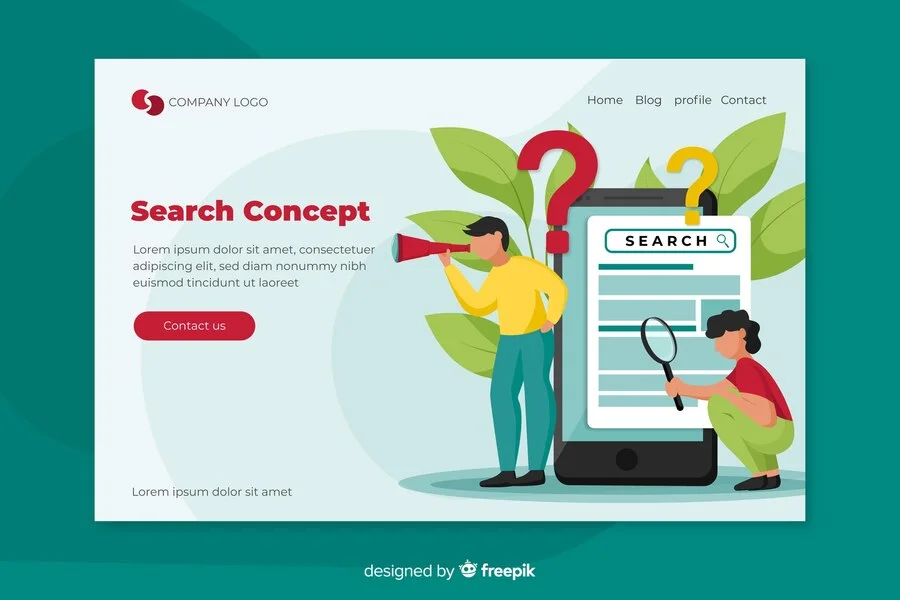BUSINESS
Common Website Design Mistakes Pest Control Businesses Should Avoid

In today’s digital world, where everyone relies on the Internet to get information on any subject, having a good website is necessary for pest control businesses. Many people now search online for local services. To attract and keep customers, pest control companies need a strong online presence. However, some common mistakes can drive away potential clients.
For example, not paying attention to user experience can be terrible for your business. If your website is hard to use or looks old, visitors might get frustrated and leave. Nobody likes to stay on a website that looks messy and where important information is hard to find. Slow loading time is one of the main culprits for higher bounce rates.
Another thing to keep in mind is SEO strategies. If you only make your website visually appealing but do not use SEO techniques, it may not show up higher in search engine rankings. Understanding web design and SEO together can be tricky. It is recommended to work with a pest control website design expert to ensure you do not make any mistakes.
Common website design mistakes pest control businesses should avoid
Neglecting mobile responsiveness.
Making sure that your website works well on all devices and screen sizes is important. When a customer visits your website on their smartphone, and your website does not load quickly or shows other issues, they are more likely to leave. When customers leave quickly, you lose money.
A responsive website means it works properly on all kinds of devices. This also means that all the text, images, and videos on the website are clearly visible on the same devices. Therefore, before you finalize your website, test it on various browsers and devices.
Poor navigation structure.
Along with responsiveness, the navigation structure of a website also greatly matters. A poor navigation system can frustrate customers and drive them away. When your potential clients enter your website and cannot find what they are looking for easily, they leave. It is important to keep information like pricing, services, and contact details easier to find.
The key is to keep things simple. Do not overdo your website with too many headings and colors. The better option is to add a search bar to allow users to search for what they want and help them locate specific information quickly.
Lack of SEO integration.
Many local pest control businesses do not know about SEO and do not integrate it into their website. This can hurt your visibility. A common mistake is not including location-specific information, such as service areas or local keywords. This results in people living in your service areas not being able to find your website.
To avoid this mistake, make sure you put your location in the header and footer of your website. This allows search engines to understand where your business operates. Additionally, you can create a page within your website known as “Service Areas” and list all the neighborhoods or cities you serve.
Using generic stock images.
While using images from the Internet does not hurt your business entirely, it could become the reason your potential clients do not trust you. People like to see authenticity in service-based businesses. Instead of poor-quality, blurry photos from Google, use your own high-quality ones. These could include pictures of their team, equipment, and successful jobs.
Before-and-after photos of pest control treatments are another great option. These images show your company’s expertise and the effectiveness of its services. They also build trust by showing potential customers the real results they can expect.
Let the pros handle your website design!
Handling a pest control business is not easy. It requires dealing with a team of staff, managing clients, looking after the finances, etc. If website design is not your cup of tea, let an SEO website design expert do the work for you!
BUSINESS
Balancing Bytes: Achieving Work-Life Harmony in the IT Sector

The Information Technology (IT) sector is a dynamic and exciting field that lies at the very heart of modern economies. It has revolutionized the way we work, communicate, and conduct daily activities. Yet, this same sector is notoriously demanding, often blurring the lines between work and personal life.
In this article, we’ll explore the complexities of work-life balance within the IT industry and suggest strategies to help IT professionals achieve the elusive equilibrium they seek.
Understanding the IT Sector’s Unique Challenges
In the IT sector, high workloads and tight deadlines are all too common. The industry moves at a relentless pace, with constant innovation and rapid technological advancements. This environment creates particular challenges that can encroach on personal time and well-being. IT professionals often find themselves working long hours, dealing with high stress, and facing unpredictable work schedules.
Additionally, the boundary-less nature of tech tasks can lead employees to feel they should always be ‘on,’ ready to jump into a problem-solving mode at a moment’s notice. Understanding these unique challenges is the first step in rectifying the balance.
The ‘Always-On’ Culture
The convenience of cloud-based services and mobile connectivity has fostered an ‘always-on’ work culture. While this is beneficial for flexible working and remote collaboration, it also means employees may struggle to disengage from work mentally and physically.
Rapid Technological Change
The IT industry’s rapid pace of technological advancement means professionals must continually learn and adapt to remain competitive. This quest for knowledge often spills over into personal time, as employees must keep their skills sharp to stay relevant.
High-Stress Environments
From system crashes to looming project deadlines, the IT workplace is a pressure cooker of potential stressors. Learning how to cope with and manage these stresses is crucial for achieving work-life balance.
Strategies for Balancing Work and Life
Even in the face of demanding work schedules and tight project deadlines, there are strategies IT professionals can employ to cultivate a healthier work-life balance.
Time Management and Prioritization
Effectively managing time and priorities can make a significant difference. Tools like the Pomodoro Technique, which breaks work into manageable intervals with frequent short breaks, can increase focus and productivity.
Setting Boundaries
Setting clear boundaries between work and personal life is essential. Avoid bringing work home or restricting work-related communications to certain hours. Interactive calendaring tools can provide clear visibility for others on your work hours.
Leveraging Technology
Paradoxically, technology can be both the cause of and solution to work-life balance issues. Automation and productivity apps can reduce the time spent on repetitive tasks, freeing up hours to invest in personal endeavors. Tools for monitoring screen time can also raise awareness of when work encroaches on leisure.
Upskilling and Learning Opportunities
Rather than viewing the ever-changing nature of technology as a burden, embrace it as an opportunity to expand your skillset and knowledge. Take advantage of training opportunities and certifications, such as those offered through Pearson VUE for CompTIA.
The Role of Employers
Organizational support plays a pivotal role in ensuring work-life harmony. Employers can adopt policies and practices that value their employees’ personal time and well-being as much as their professional contributions.
Flexibility and Remote Work
Offering flexible work schedules and remote work options can drastically improve employees’ ability to balance their personal and professional lives. This gives IT professionals the autonomy to structure their work around personal commitments.
Mental Health and Wellness Programs
Employers can offer resources and support to help employees manage stress and maintain mental and physical well-being. These can include counseling services, gym memberships, mindfulness programs, and healthy living incentives.
Supportive Leadership
Managers who lead by example and encourage a healthy work-life balance set the tone for the entire organization. Leaders can play a critical role in establishing a culture that respects and supports employees’ time away from work.
The Future of Work-Life Balance in IT
As we look to the future, the IT industry is poised to develop even more advanced solutions for achieving work-life balance. Innovations such as AI-driven scheduling, self-regulating systems that manage workloads, and virtual reality for real-world disengagement could transform the way we approach balance in the workplace. However, with each technological leap, we must consider the human element, ensuring that these tools enhance rather than overwhelm our lives.
BUSINESS
What Is an Ad Exchange? A Comprehensive Explanation

Staying ahead of the competition in today’s highly competitive digital landscape means using the latest tools and strategies to ensure your content reaches the right customers at the perfect time. One of the most valuable tools in your online advertising arsenal is an ad exchange.
That, then, begs the question: What is an ad exchange? At first glance, it might sound like Wall Street jargon. But in reality, it’s one of the pillars of online advertising. Here’s what you need to know about ad exchanges and how to use one to achieve your brand goals.
What Is an Ad Exchange?
Imagine a bustling grocery store, but instead of things like fruits and veggies, the shelves are lined with ad spaces. That’s the quick and simple idea behind an ad exchange.
More specifically, an ad exchange is a digital marketplace in which publishers, website owners, and other entities with digital inventories list and purchase available ad space. They can set minimum pricing, organize their “stock,” and (most importantly) connect with brands that want to buy their virtual inventory. Instead of haggling over prices at checkout, “shopping” on an ad exchange is all about reaching the right audience and ensuring your ads receive the most clicks and impressions.
As a business owner or advertiser, ad exchanges provide you with the chance to access a wide range of advertising inventory. You won’t have to partner with individual sites and can instead set up campaigns that help you earn impressions across hundreds of websites, apps, or streaming channels all at once.
How It Works
The magic of ad exchanges lies in the real-time bidding (RTB) process. When a user visits a website, the ad exchange processes information about available ad space and analyzes the user’s data. It will then compare these insights to current campaigns and identify advertisers who will most likely want to connect with that type of customer.
From there, it will initiate a real-time digital auction for the ad space. The winning bid earns the impression, is billed for the transaction, and displays its content in the space. Other auction participants will not be charged. The entire process takes place in the span of milliseconds.
Since you control your bidding limits, you can adjust your strategy to get the most quality impressions within your budget. If you are burning through your budget too quickly, you may be bidding too high. But on the other hand, if your ad rarely wins, you may need to up your threshold a bit.
The Ad Exchange Ecosystem
There are five components to ad exchanges, which are as follows:
Publishers
A publisher is a website owner, app creator, or any other entity with digital ad space to sell. They’re looking to monetize their websites without having to negotiate deals with each advertiser.
Advertisers
As someone looking to promote their products or services, an advertiser brings the demand to ad exchanges. You can find great spots for your ads without manually searching through thousands of websites.
Ad Networks
You can think of ad networks as wholesalers that aggregate ad space from publishers and sell it to advertisers. They play a crucial role in ensuring that there is plenty of inventory to go around.
Demand-Side Platforms (DSPs)
DSPs offer a unified interface for overseeing all of your campaigns. As an advertiser, you will likely use a DSP to manage multiple ad exchange accounts.
Supply-Side Platforms (SSPs)
An SSP is, at its core, the publisher’s version of a DSP. It allows inventory owners to manage their unsold ad inventory across multiple exchanges.
Why Use an Ad Exchange?
As a publisher, ad exchanges offer a way to efficiently and effectively fill ad space. You can get the best price for your inventory through RTB, and you can avoid the hassle of manually negotiating with advertisers.
And if you are on the opposite side of the transaction, ad exchanges give you access to a vast selection of inventory. They also include tools to target specific audiences based on demographics, interests, and other variables. That kind of precision helps in making your advertising dollars count, ensuring that your content is only displayed to potential customers.
Ultimately, ad exchanges provide exceptional efficiency and control to all parties. You can set bid amounts, control your budget, and run detailed reports to see if your campaign is producing the desired results. Just remember that these exchanges aren’t set-it-and-forget-it measures: You need to keep a close eye on your content and make continuous adjustments to grow your reach.
Get Noticed With an Ad Exchange
Participating in ad exchanges and using things like DSPs can expand your reach and diversify your marketing mix. Before you know it, you’ll be gaining quality impressions and driving meaningful traffic to your website.
BUSINESS
Securing Your Legacy: Why Hiring a Fee-Only Financial Advisor is Crucial for Estate Planning

Estate planning is a crucial part of financial management, even though many disregard or delay it. While some may perceive it as a concern reserved for the affluent or elderly, the reality is that everyone, irrespective of age or financial standing, can gain from a meticulously crafted estate plan. It entails making provisions for the administration and dispersal of your assets in the event of incapacity or demise. This article discusses the significance of estate planning and underscores the necessity of engaging a fee-only financial advisor to ensure the efficacy and success of your estate plan.
Different Kinds of Financial Advisors
Financial advisors come in various types, each offering distinct qualifications, services, and compensation models. Some operate on a commission basis, earning fees by selling financial products or services. Conversely, others charge flat fees or hourly rates for their advice. Moreover, certain advisors may receive compensation through fees and commissions.
The Distinction: Fee-Only Advisors
Among the array of financial experts, fee-only advisors distinguish themselves through their distinct compensation structure. These professionals exclusively receive compensation from the fees they charge their clients for their services. Unlike advisors who earn commissions or other forms of compensation from third-party financial products, fee-only advisors are bound by a fiduciary duty to prioritize their clients’ best interests consistently.
Why Choose a Fee-Only Advisor for Estate Planning?
Hiring a fee-only advisor for estate planning can offer several advantages:
Ensuring Objective Advice and Conflict-Free Recommendations
Fee-only advisors operate on a transparent and conflict-free basis. Because they do not receive commissions or incentives from selling specific financial products, they can provide objective advice solely focused on meeting their clients’ needs and objectives. This ensures that the recommendations they make are in the best interest of their clients and not influenced by outside factors.
Tailored Strategies for Your Unique Needs
Estate planning is not a one-size-fits-all process. Every individual and family has unique financial circumstances, goals, and concerns that need to be addressed in their estate plan. Fee-only advisors take a personalized approach to estate planning, taking the time to understand their clients’ specific needs and objectives and developing tailored strategies to achieve them.
Navigating Complex Financial Situations
Estate planning can involve navigating a variety of complex financial issues, including tax planning, asset protection, charitable giving, and more. Fee-only advisors have the expertise and experience to help clients navigate these complexities and make informed decisions that align with their overall estate planning goals.
Long-Term Relationship and Legacy Management
Finally, hiring a fee-only advisor for estate planning can help ensure a long-term relationship built on trust and mutual respect. Unlike advisors who are incentivized by selling products or services, fee-only advisors are committed to building lasting relationships with their clients and helping them manage their legacy for generations to come. Estate planning stands as a pivotal facet of financial management, demanding thoughtful deliberation and expert counsel. Engaging a fee-only financial advisor offers invaluable benefits, including objective advice, tailored strategies, and ongoing assistance to safeguard your legacy and ensure the financial well-being of your loved ones. With a fee-only advisor at your side, you can have confidence that your estate plan receives diligent attention and that your intentions will be executed precisely as you desire.

 TECHNOLOGY4 months ago
TECHNOLOGY4 months agoBlog Arcy Art: Where Architecture Meets Art

 ENTERTAINMENT6 days ago
ENTERTAINMENT6 days agoExploring the Kristen Archives: A Treasure Trove of Erotica and More

 ENTERTAINMENT2 days ago
ENTERTAINMENT2 days agoKiss KH: The Streaming Platform Redefining Digital Engagement and Cultural Currents

 LIFESTYLE4 months ago
LIFESTYLE4 months agoThe Disciplinary Wives Club: Spanking for Love, Not Punishment

 LIFESTYLE6 days ago
LIFESTYLE6 days agoWho Is Sandra Orlow?

 EDUCATION2 days ago
EDUCATION2 days agoLingrohub Platform: A Complete Student Access Guide

 ENTERTAINMENT3 weeks ago
ENTERTAINMENT3 weeks agoMonkeyGG2: Your Personal Gaming Hub

 TECHNOLOGY2 days ago
TECHNOLOGY2 days agoCasibom: The Digital Alchemy Reshaping Systems, Society, and Self










